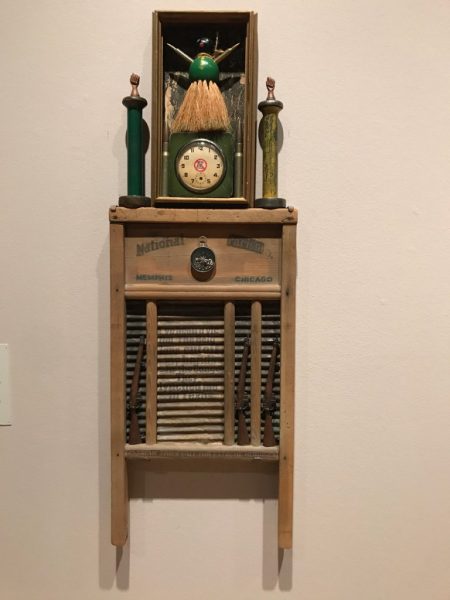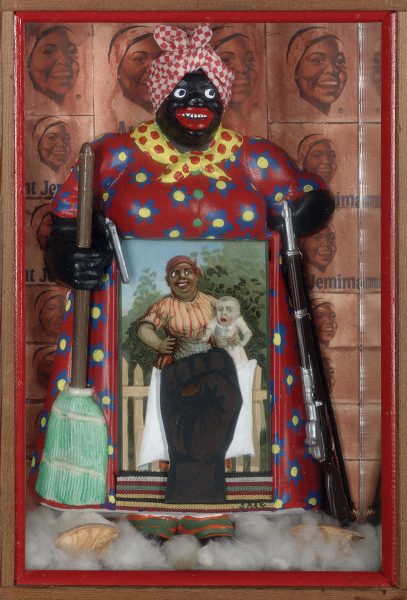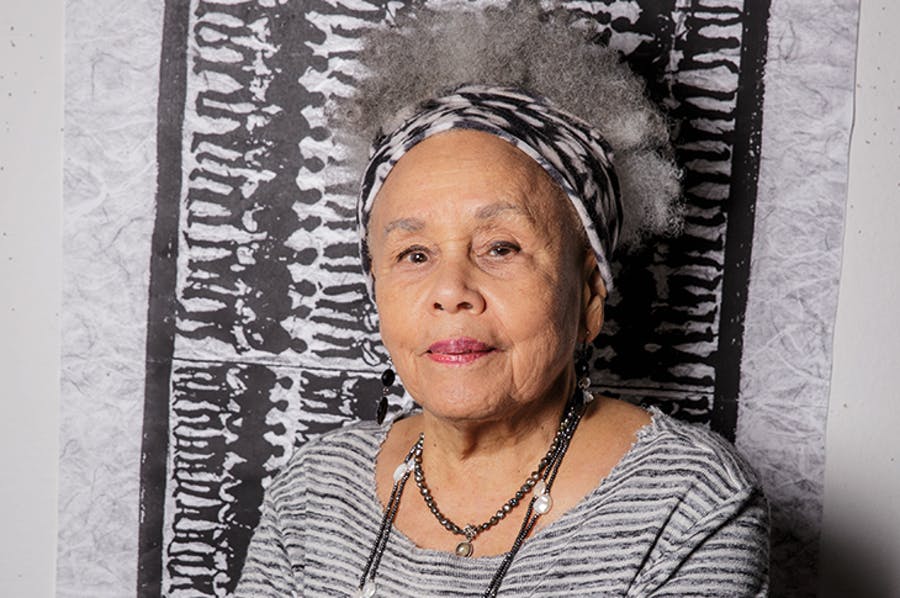In celebration of Black History Month, Currents staff curated some of their favorite Black artists. Enjoy!
Untitled (Studio) by Kerry James Marshall is, in part, about that discovery of a black artist’s atelier: a distinguished place of labor where an allegorical catalogue of the many modes of artmaking are on display. The painting is not only a majestic ode to the occupation of the artist, but also a paean to the history and endless potential of the medium.
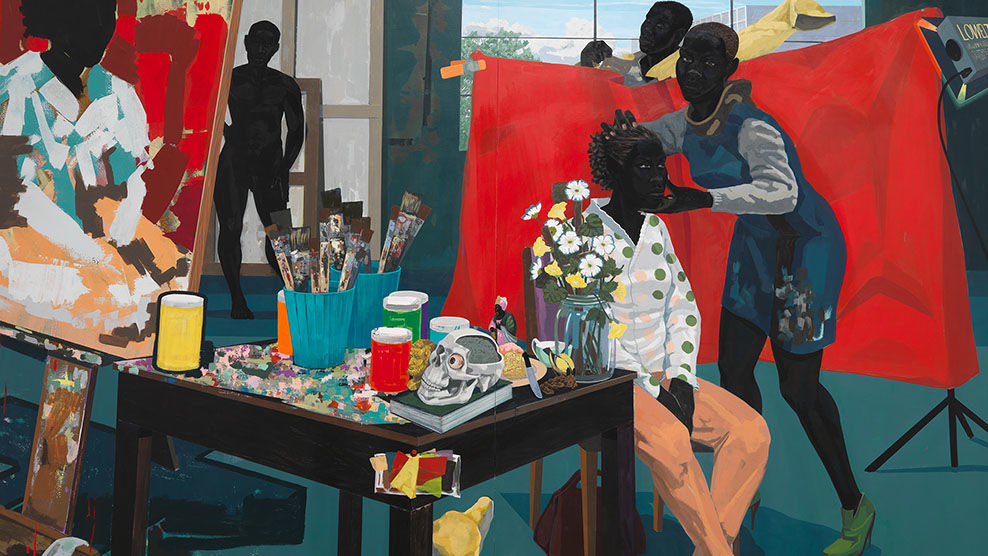
In 1976 the Los Angeles County Museum of Art opened Two Centuries of Black American Art as its major exhibition for the American bicentennial year. It was the first comprehensive survey of African American art which, following its premier at LACMA, toured three other major U.S. art institutions. The premise was to acknowledge the work of black artists during the period of 1750 to 1950, whose contributions to American art had largely been neglected. Featuring over 200 works and 63 artists, the show included painting, sculpture, drawing, graphics, crafts and decorative arts.
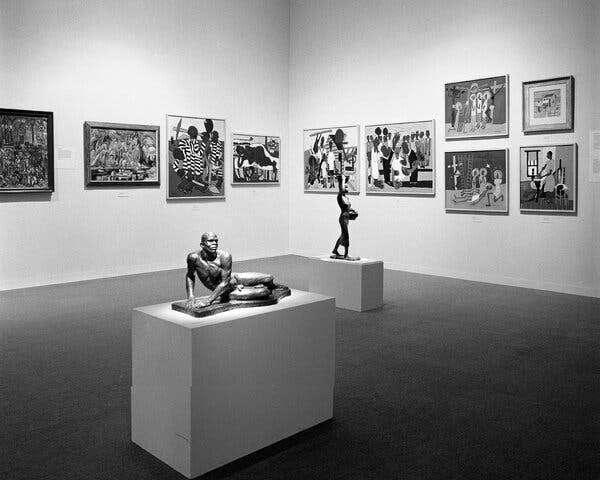
Mark Bradford engages the discarded materials of urban life, often remnants of informal economic systems that arise out of necessity in the inner city. Bradford grew up in Los Angeles, the son of a family of hairdressers. From early on, he used the materials found around salons, including the paper rectangles used for permanents, bobby pins, and hair dyes. Over time, his art making grew to include video, installation, and photographs alongside his continued interest in printmaking and collage. Bradford describes his work: “Think about all the white noise out there in the streets: all the beepers and blaring culture—cell phones, amps, chromed-out wheels, and synthesizers. I pick up a lot of that energy in my work, from the posters, which act as memory of things pasted and things past. You can peel away the layers of papers and it’s like reading the streets through signs.”
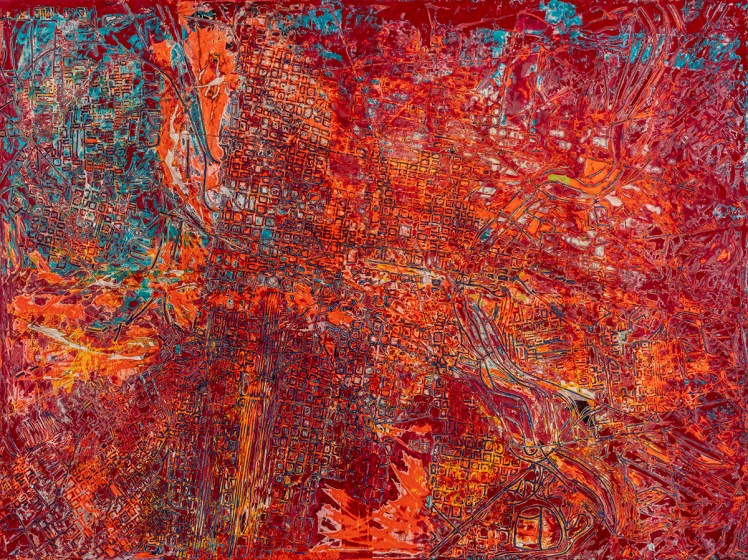

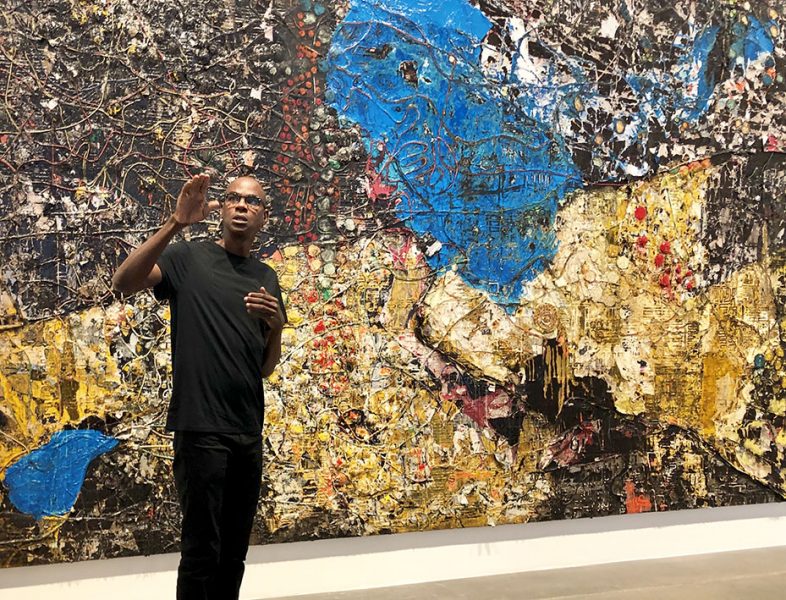
Amy Sherald received her MFA in Painting from Maryland Institute College of Art (2004) and BA in Painting from Clark-Atlanta University (1997), and was a Spelman College International Artist-in-Residence in Portobelo, Panama (1997). In 2016, Sherald was the first woman to win the Outwin Boochever Portrait Competition grand prize; an accompanying exhibition, The Outwin 2016, has been on tour since 2016 and opened at the Kemper Museum, Kansas City, MO in October 2017.
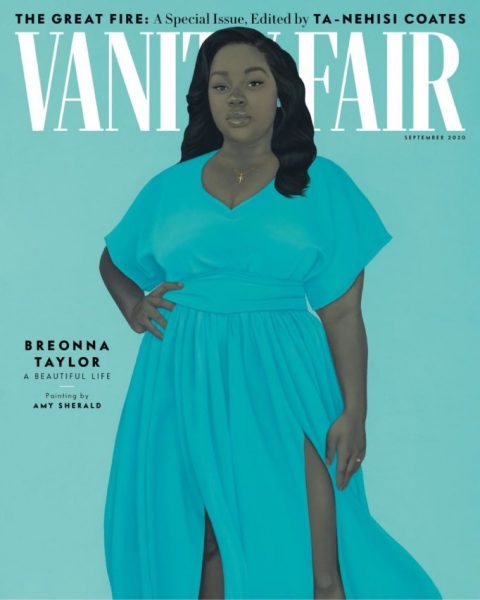
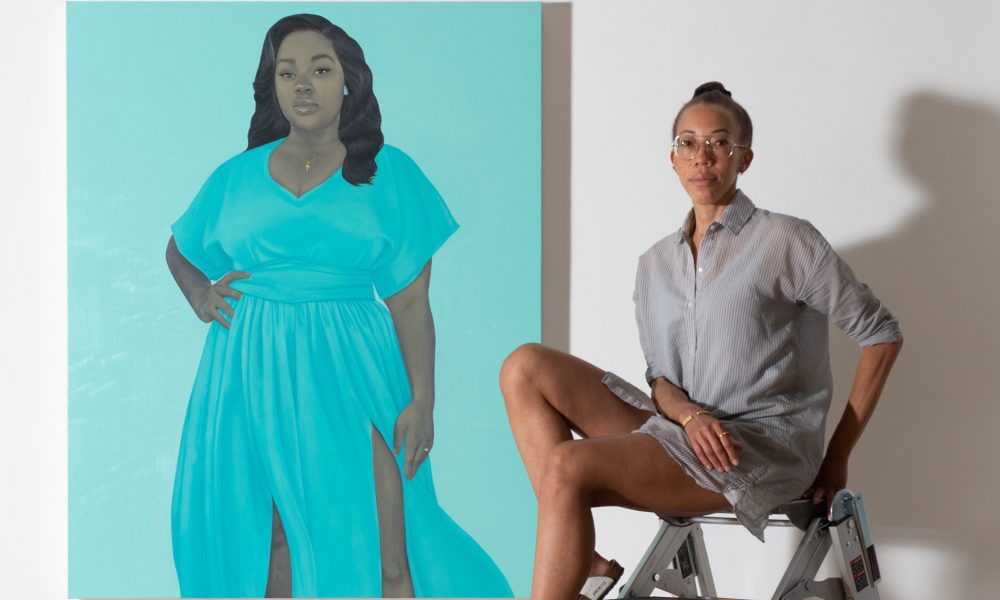
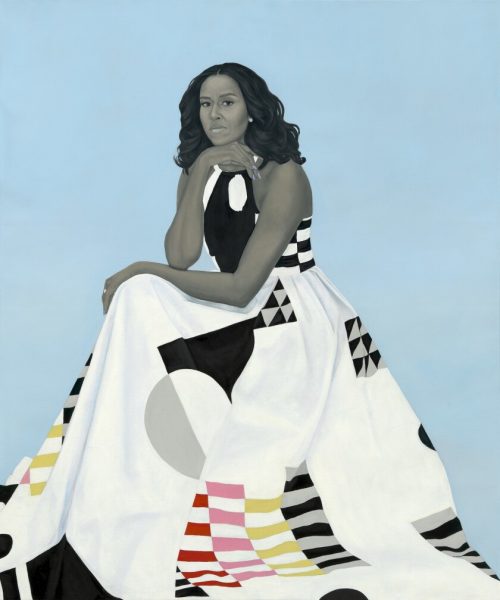
LA native and NY based visual artist, Kehinde Wiley has firmly situated himself within art history’s portrait painting tradition. As a contemporary descendent of a long line of portraitists, Wiley, engages the signs and visual rhetoric of the heroic, powerful, majestic and the sublime in his representation of urban, black and brown men found throughout the world.
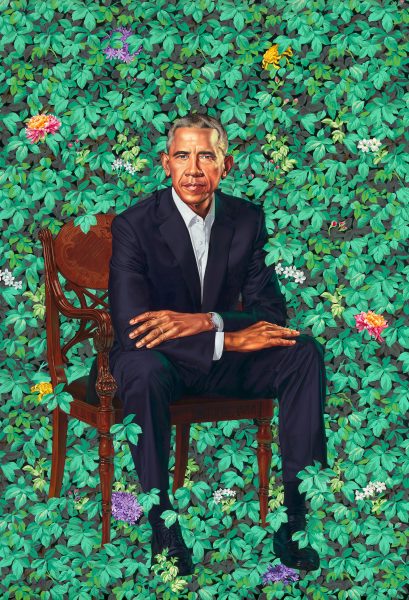
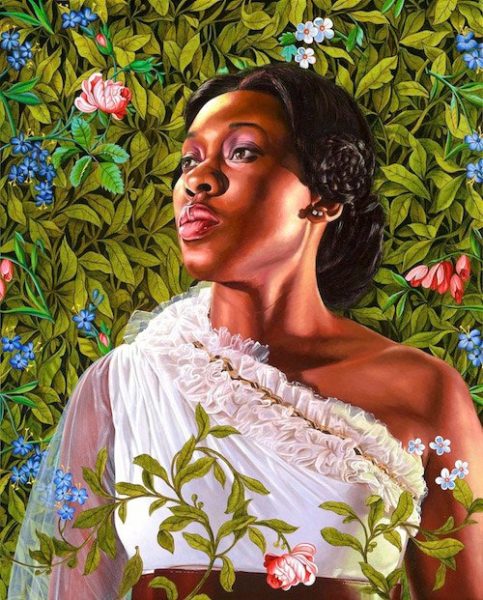
Kara Elizabeth Walker was born in Stockton, California in 1969. The matrix of artist’s panoramas glued to the white walls of the rooms is produced in the tradition of Indian, Chinese and Javanese shadow theatre. It’s a story of dark images that do not present any kind of movement. A landscape of images that tell episodes and stories of men, women and children whose bodies intertwine against the background of huts and trees.
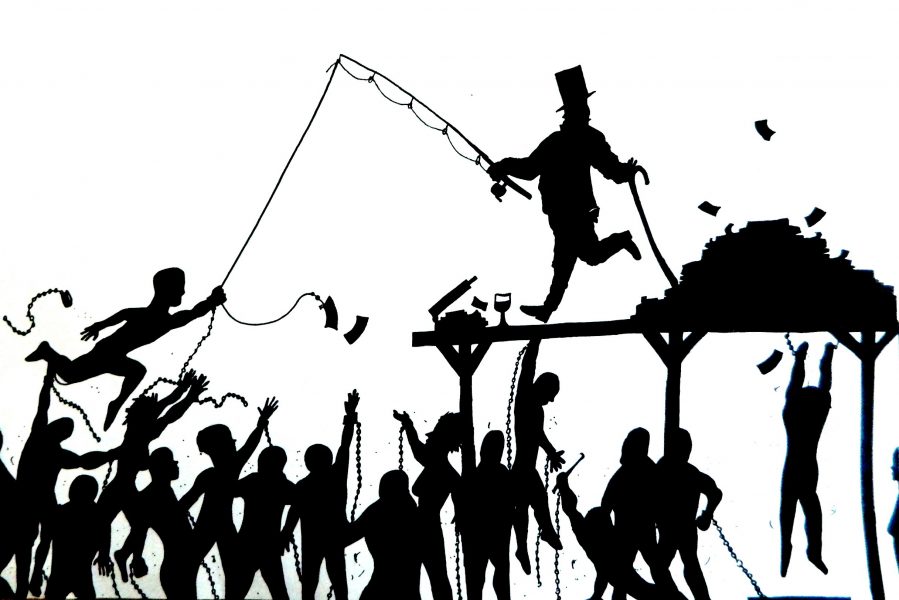
Nick Cave’s multifaceted performance, installation, and sculptural practice has crafted formations of black identity and community in past and present adverse times.
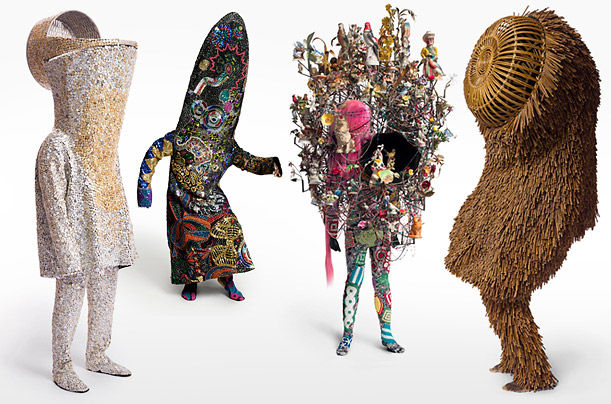
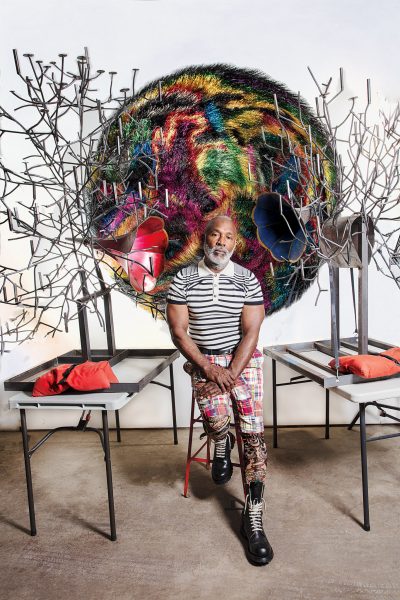
Betye Saar has contributed significantly to black aesthetics, from the Black Arts Movement
of the 1960s and ’70s through today. Her trajectory has been marked by a poetic and incisive sense of re-appropriation and agency. Political gesture is visible in all her assemblages. As she transforms everyday objects into artworks, she advocates profound shifts in economic, political, and cultural institutions. Ultimately, she hopes to instigate social change.
